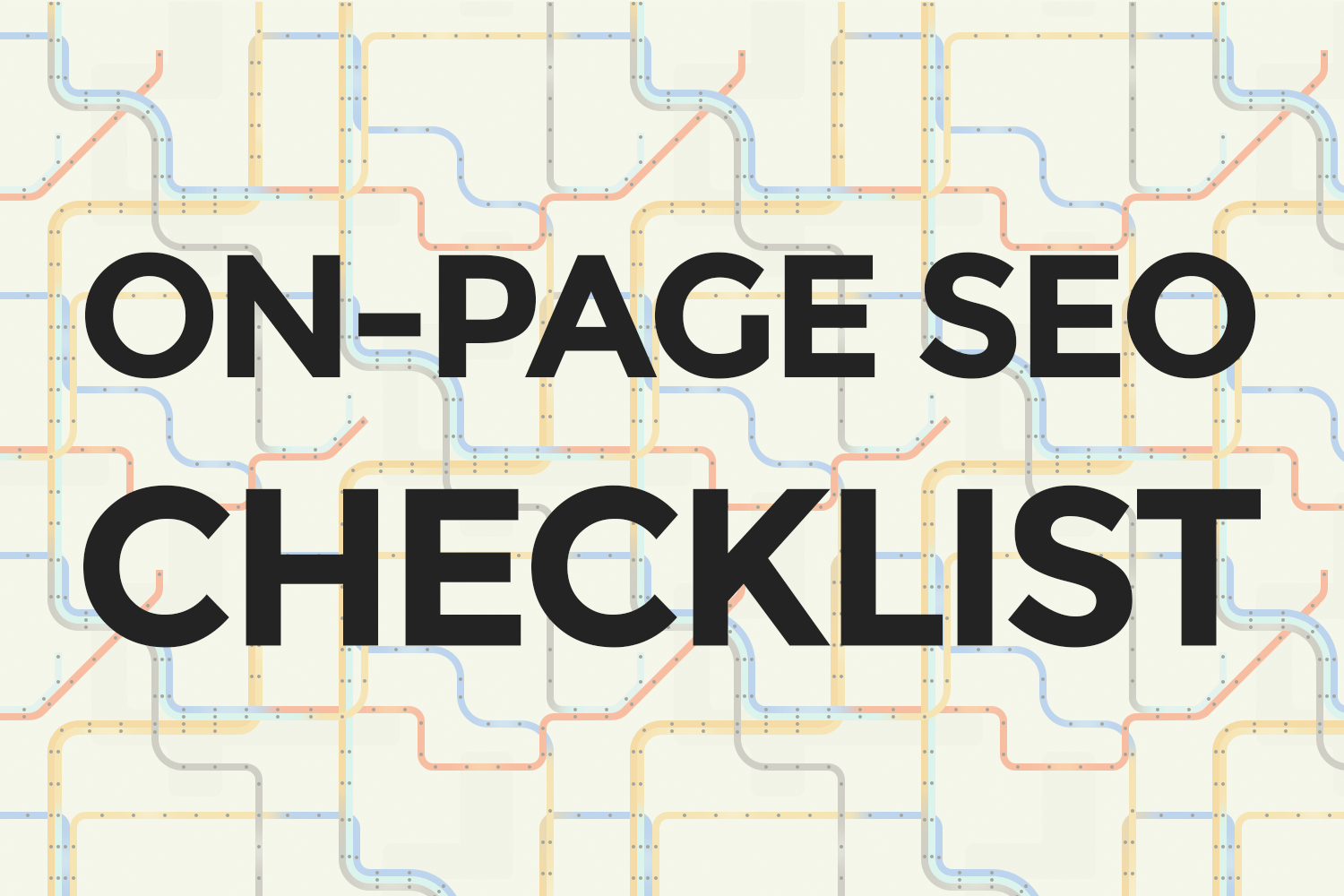A complete checklist for On page Search Engine Optimization
Search engine Optimization or SEO is broadly classified into two main sections: On-page optimization and Off-page optimization. On-page optimization is focused upon web site and pages, which in turn improve the search rankings of web site. Off-page optimization mainly focus upon link building and back-links. Both these optimization techniques have equal importance in SEO, without which SEO work never gets succeed. Within this article, we are going to discuss about both on-page techniques.
On-page Optimization basics
One must understand the basics of on-page SEO technique to get the top rank in search engine results. “On-page SEO is considered the foundation of every website”, once you carry out it in the right way you will get the right ranking results.
Start-up guide for newbies
Here are certain factors one must look into, not necessary that all these must be carried out in a particular order though.
1. Title Tag
Place your main keyword within the title tag, make sure that you never optimize every page with the same keyword. Make it natural, let people find it genuine and click into your web page. Earlier it was said that the title tag of a website must be 70 characters since Google displays around 70 characters within the search results. But now Google displays the title tag based on the pixel width. So, there is no strict rule that you must add 70 characters. If you install the SEO Yoast plugin within your website (WordPress Websites Only), you can actually view what exactly will display within the search results(Rough estimation only). Or you can check your title tag length here. It never takes too much time to write a title tag, but you must have an idea about how to optimize them well and make them look natural.
2. Meta Description
Meta descriptions are not a big contributor for search engine rankings, but one must make it tempting for readers to click to your page. Meta descriptions are the first notch of writings or idea people gets when they first notice your web page in search engine. So, for making a first good impression make it compelling one!!
3. Header tags
Header tags are yet another important factor in on-page optimization. Place the main and targeting keyword within the main header tag that is H1, now place the rest in ascending order H2, H3…etc. Make sure that you make use of only one H1 tag. While creating header tags make sure that you make the H1 tag the best and optimize them properly.
4. Creating an eye-catching content
Content is said to be the king. Content of a page determines its relevancy and strength, so be sure that your web pages consist of eye-catching and relevant content. Google’s Panda update is the main algorithm which completely focuses on the content quality of a page, so for escaping from such penalty make sure that you incorporate good, heavy and user-friendly content. Content should be written for users, rather than a search engine: this is what exactly Google wants. Natural, genuine and relevant content. Keyword stuffing is outdated, so there is no need to mention your keyword throughout the content. The next thing to keep in mind is that never copy content from any sites, by doing so your site is going to get penalized. According to the latest reports, Google always ranks well pages having lengthy content, so make sure you have a lengthy post within your web page.
5. URL structure
URL structure is yet another important area to look into. Make sure that your website contains page having a search engine friendly URL like www.domain.com/pagename. This is the best style to make your page URL, user friendly as well as search engine friendly. Usage of hyphens is recommended rather than following underscores.
6. Error Resolution
Implement 301 redirects correctly from the old destination to the new destination, otherwise your users will face 404 errors. You can check this by visiting webmaster tools, which will help you resolve the errors. If your web page shows 404 error make sure that you redirect that page to the original destination if such page does not exist, make sure that you redirect them to the home page itself. If 302 pages arise, then make sure you convert such links to 301.
7. Robots.txt file and its importance
Robot.txt file is used to block web pages which help them being not crawled by Google. Robot.txt file is located within your website (www.domain.com/robots.txt). Check out this page to make sure none of the pages are blocked. If you find any poor quality pages and you do not want to make it visible to search engines. You can fix all these problems here itself.
8. Device friendly Interface
A multi-device friendly website is always an added benefit for a website. Responsive version of a website makes it more user friendly and make it available for all types of users. This is considered as the best website by search engines. So, be sure that your web page is user friendly.
9. Canonical URL’s
Making use of many urls and using them accessible is a very bad perspective. It confuses the search engine, it acts like manipulating search engines. So make sure that you add the canonical tag to reference.
10. Nail Loading Page speed
The Page speed of your website is yet another factor to look into. Make sure that your page has less loading speed. Google is currently investing a lot of money in order to make the web faster, so page speed of your web site indeed stands out as an important and unique factor in on-page SEO. One can check the page speed of the website within Page Speed Insights. Getting more than 90% when checked by Google page speed insights is helpful.
11. Image SEO
Incorporating images within your content is a very good way of making it visually appealing. Make sure that the images you have uploaded consist of titles, relevant keywords, this can improve your site SEO. Complete areas like ALT text and descriptions, which is another important factor to make SEO more effective.
12. Internal Linking
We all have a misconception that links that are coming from other sources will help you gain quality links. One can place links on other pages of own website to the content. This is indeed a best practice to gain the best result in SEO. Placing such links helps your web page being easily crawled by the search engines, which is a great thing right??
Things to take into consideration while internal linking
- Don’t continually make use of keywords for internal links.
- Select wisely, link only those things which are useful for your readers. Never place links which are not relevant for the phrase or text, this can, in turn, affect adversely.
- Don’t go for more than five to eight internal links per web page.
- If you have any post related to the current post, you can place them beneath the post too.
13. XML Sitemap
Check whether you have XML site map created for your website (www.domain.com/sitemap.xml). One can easily create an XML sitemap and place them within the root directory. This can be done by means of a WordPress plugin or FTP.
14. Social Media Connectivity
Once you have build your website, make sure that you have social media profiles. Creating social media profiles and promoting them is very important and helpful in this current era. Create profiles within the main social media like Google+, Facebook, Twitter, Linkedin, Myspace etc. (There are many others, though, i have listed just the hot ones here). Now you can place those social media icons within your website.
15. Contact Information
This sounds awkward? You may think how does contact info relate to site SEO right? But this is a very important factor. Providing your contact info will make sure that your site is genuine, placing details like phone number, email id and address adds a matter of trust to both users as well as search engines.
16. Adding multimedia content
Adding attractive and compelling multimedia will always be a visual treat for the users. While writing a post why not add a video tutorial or infographics explaining your content?? It would be a great tip to make your webpage reach the maximum audience.
17. Slice down Bounce Rate
While going through a website if a person quits your website immediately it means that user is not satisfied by your website. This rate is noted by Google via tools like Google Analytics, Chrome, Google toolbar etc. So, in order to escape from such a hit by Google make sure that you have a clean, compelling and user-friendly website.
18. Make use of LSI keywords
Google uses LSI keywords to determine page relevancy and quality. This is exactly what we find related keywords from Google Adwords, choose wisely so that your complete optimization works out well.
19. Adding modifiers to titles
The title is something which readers go through first, before reading the post. So make sure that your title appears best and lit bit lengthy advisable. Words like best, guide, reviews, year, etc. are examples.
20. Keyword Density
While writing a post to be sure that you don’t stuff your keyword here and there. Be natural, don’t try to include keyword throughout your post. Make use of the keyword wisely, the position of your keyword must within the first half of the post. An optimum range of keyword density is around 1-3%.


